Blagoj Mitrevski
Sketch-to-Layout: Sketch-Guided Multimodal Layout Generation
Oct 31, 2025Abstract:Graphic layout generation is a growing research area focusing on generating aesthetically pleasing layouts ranging from poster designs to documents. While recent research has explored ways to incorporate user constraints to guide the layout generation, these constraints often require complex specifications which reduce usability. We introduce an innovative approach exploiting user-provided sketches as intuitive constraints and we demonstrate empirically the effectiveness of this new guidance method, establishing the sketch-to-layout problem as a promising research direction, which is currently under-explored. To tackle the sketch-to-layout problem, we propose a multimodal transformer-based solution using the sketch and the content assets as inputs to produce high quality layouts. Since collecting sketch training data from human annotators to train our model is very costly, we introduce a novel and efficient method to synthetically generate training sketches at scale. We train and evaluate our model on three publicly available datasets: PubLayNet, DocLayNet and SlidesVQA, demonstrating that it outperforms state-of-the-art constraint-based methods, while offering a more intuitive design experience. In order to facilitate future sketch-to-layout research, we release O(200k) synthetically-generated sketches for the public datasets above. The datasets are available at https://github.com/google-deepmind/sketch_to_layout.
InkSight: Offline-to-Online Handwriting Conversion by Learning to Read and Write
Feb 21, 2024



Abstract:Digital note-taking is gaining popularity, offering a durable, editable, and easily indexable way of storing notes in the vectorized form, known as digital ink. However, a substantial gap remains between this way of note-taking and traditional pen-and-paper note-taking, a practice still favored by a vast majority. Our work, InkSight, aims to bridge the gap by empowering physical note-takers to effortlessly convert their work (offline handwriting) to digital ink (online handwriting), a process we refer to as Derendering. Prior research on the topic has focused on the geometric properties of images, resulting in limited generalization beyond their training domains. Our approach combines reading and writing priors, allowing training a model in the absence of large amounts of paired samples, which are difficult to obtain. To our knowledge, this is the first work that effectively derenders handwritten text in arbitrary photos with diverse visual characteristics and backgrounds. Furthermore, it generalizes beyond its training domain into simple sketches. Our human evaluation reveals that 87% of the samples produced by our model on the challenging HierText dataset are considered as a valid tracing of the input image and 67% look like a pen trajectory traced by a human. Interactive visualizations of 100 word-level model outputs for each of the three public datasets are available in our Hugging Face space: https://huggingface.co/spaces/Derendering/Model-Output-Playground. Model release is in progress.
Modeling Online Behavior in Recommender Systems: The Importance of Temporal Context
Sep 19, 2020
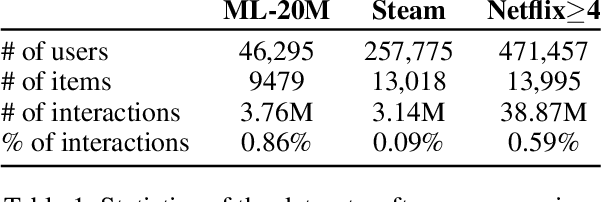

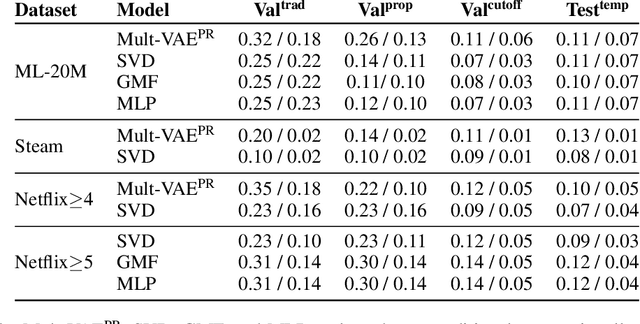
Abstract:Simulating online recommender system performance is notoriously difficult and the discrepancy between the online and offline behaviors is typically not accounted for in offline evaluations. Recommender systems research tends to evaluate model performance on randomly sampled targets, yet the same systems are later used to predict user behavior sequentially from a fixed point in time. This disparity permits weaknesses to go unnoticed until the model is deployed in a production setting. We first demonstrate how omitting temporal context when evaluating recommender system performance leads to false confidence. To overcome this, we propose an offline evaluation protocol modeling the real-life use-case that simultaneously accounts for temporal context. Next, we propose a training procedure to further embed the temporal context in existing models: we introduce it in a multi-objective approach to traditionally time-unaware recommender systems. We confirm the advantage of adding a temporal objective via the proposed evaluation protocol. Finally, we validate that the Pareto Fronts obtained with the added objective dominate those produced by state-of-the-art models that are only optimized for accuracy on three real-world publicly available datasets. The results show that including our temporal objective can improve recall@20 by up to 20%.
Momentum-based Gradient Methods in Multi-objective Recommender Systems
Sep 10, 2020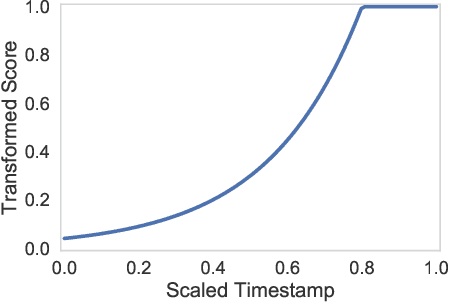
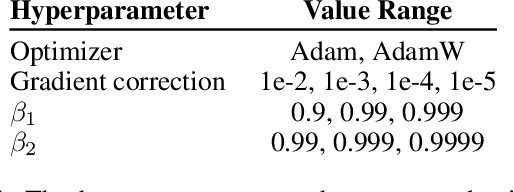
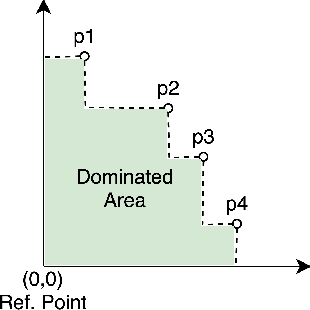

Abstract:Multi-objective gradient methods are becoming the standard for solving multi-objective problems. Among others, they show promising results in developing multi-objective recommender systems with both correlated and uncorrelated objectives. Classic multi-gradient descent usually relies on the combination of the gradients, not including the computation of first and second moments of the gradients. This leads to a brittle behavior and misses important areas in the solution space. In this work, we create a multi-objective Adamize method that leverage the benefits of the Adam optimizer in single-objective problems. This corrects and stabilizes the gradients of every objective before calculating a common gradient descent vector that optimizes all the objectives simultaneously. We evaluate the benefits of Multi-objective Adamize on two multi-objective recommender systems and for three different objective combinations, both correlated or uncorrelated. We report significant improvements, measured with three different Pareto front metrics: hypervolume, coverage, and spacing. Finally, we show that the Adamized Pareto front strictly dominates the previous one on multiple objective pairs.
 Add to Chrome
Add to Chrome Add to Firefox
Add to Firefox Add to Edge
Add to Edge